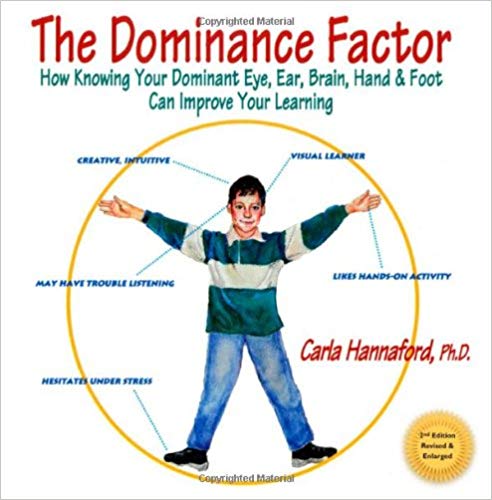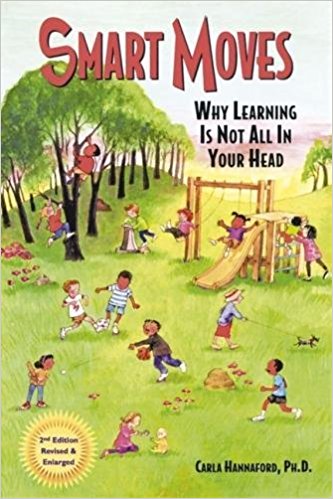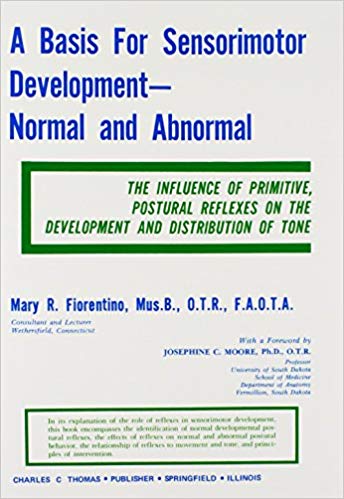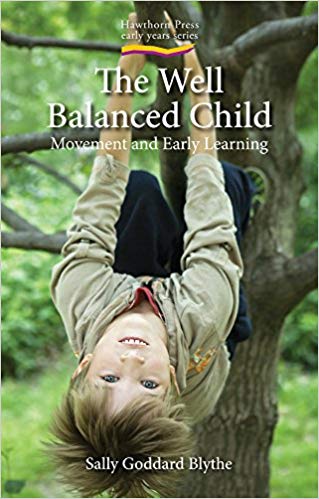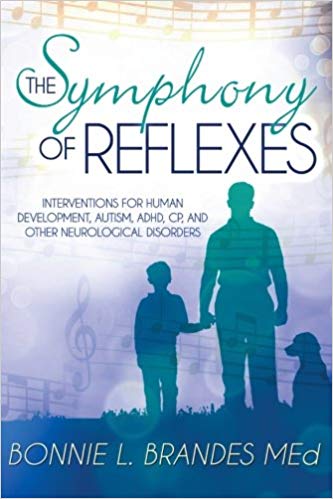Looking to better understand primitive reflexes, how reflexes impact development, and what you can do to support children (and adults) who have retained primitive reflexes? You are in luck! This collection of books about primitive reflexes offer tools you can use to support functional independence, learning in the classroom, community independence, social emotional learning, and so much more!
Books about Primitive Reflexes
If you are just getting started with understanding the impact primitive reflexes has on everyday functioning, then reading out blog post on what are primitive reflexes is a good place to begin.
Primitive Reflexes impact a child’s ability to function in so many ways. Learning about primitive motor reflexes is something that we’ve all gone through as therapists during our school career during those days in occupational therapy schools.
There are many questions about primitive reflex integration, too. Specifically what is a reflex and what is reflex integration.
That’s why I wanted to put together some information on primitive reflex integration, including books about primitive reflexes so that a collection of tools are available for anyone researching reflexes and their impact on functioning.
You’ll also find more resources on primitive reflex integration including courses on primitive reflexes.

Books on Primitive Reflex Integration
The following books are resources available on Amazon. There are many more books on primitive reflexes out there, and they are tools that therapists may have had access to during occupational therapy school programing. I wanted to limit the list below to books that are easily accessible.
Have you read or used any of these books on primitive reflexes? Do you have any other book recommendations that you would like to share with readers?
The Dominance Factor: How Knowing Your Dominant Eye, Ear, Brain, Hand & Foot Can Improve Your Learning by Carla Hannaford
- Smart Moves: Why Learning Is Not All in Your Head by Carla Hannaford
A Basis for Sensorimotor Development-Normal and Abnormal: The Influence of Primitive, Postural Reflexes on the Development and Distribution of Tone by Mary R. Fiorentino
The Well Balanced Child: Movement and Early Learning (Early Years) by Sally Goddard Blythe
The Symphony of Reflexes: Interventions for Human Development, Autism, ADHD, CP, and Other Neurological Disorders by Bonnie Brandes M.Ed.
Other Primitive Reflex Resources
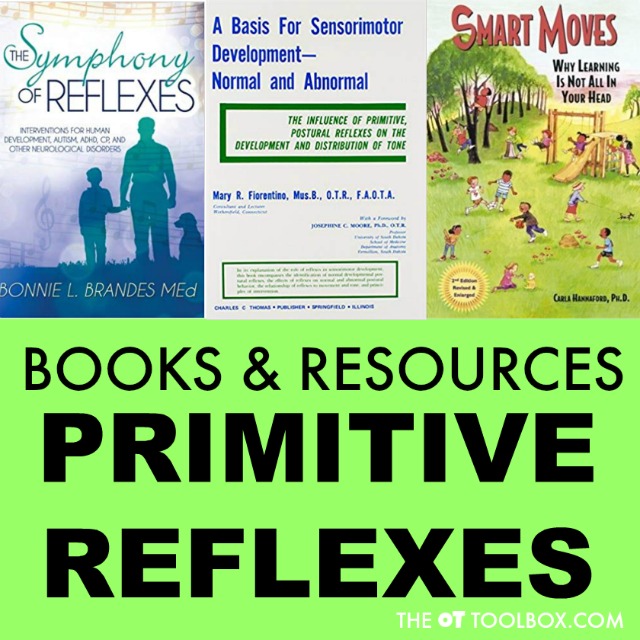
Need more information on retained primitive reflexes?
For the clients, students, and kids that you see and work with every day that possibly have one or more retained primitive reflexes, may struggle in any of the following areas:
- Sensitive to touch, sound, smell and taste
- Balance issues, is clumsy, struggles with sports, runs into furniture
- Freezes or is in constant fight or flight mode
- Poor impulse control, easily distracted, severe mood swings
- Can’t cross the midline, trouble with hand-eye coordination, struggles with fine motor
- Has difficulty tracking when reading and writing
- Poor posture, attention issues, wraps legs around chair, wets the bed after the age of five
- W-sitting, poor muscle control, toe walking
Primitive Reflexes e-Course and Handbook
Check out this primitive reflexes course. (affiliate link)
Assessment And Integration Of Primitive Reflexes For Improved Independence In Daily Activities is a course on primitive reflexes where you’ll learn how to, screen, test and integrate retained primitive reflexes and find tools to help your client or child improve motor, social and daily functioning skills by implementing fun, therapeutic, and functional activities!
In this primitive reflexes course, created by two occupational therapists, you’ll find modules and functional intervention activities for:
- Moro reflex
- The Tonic Labyrinthine (TLR) & Landau Reflex
- The Rooting Reflex
- The Asymmetrical Tonic Neck Reflex (ATNR)
- The Spinal Galant Reflex
- The Palmar Grasp Reflex
- The Symmetric Tonic Neck Reflex (STNR)
- Support for kids who push back
- Printable handouts, screening tools, and checklists
- Information on postural reflexes, yoga, sensory diets, and more
- Case studies
- Research
- AOTA continuing education: 1.05 AOTA CEUs
If your child has retained primitive reflexes, learning to integrate them could lead to improved development in many areas:
- Social Skills
- Learning
- Motor Skills
- Executive
- Functioning
- Coordination
- Reading & Writing
Find out more and gain insight and tools on retained primitive reflexes and start supporting kids needs with “Assessment And Integration Of Primitive Reflexes For Improved Independence In Daily Activities” today.

Colleen Beck, OTR/L has been an occupational therapist since 2000, working in school-based, hand therapy, outpatient peds, EI, and SNF. Colleen created The OT Toolbox to inspire therapists, teachers, and parents with easy and fun tools to help children thrive. Read her story about going from an OT making $3/hour (after paying for kids’ childcare) to a full-time OT resource creator for millions of readers. Want to collaborate? Send an email to contact@theottoolbox.com.


